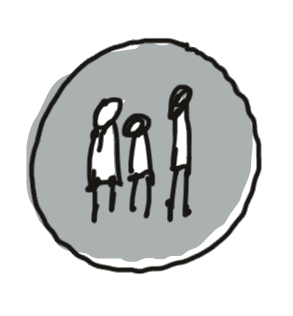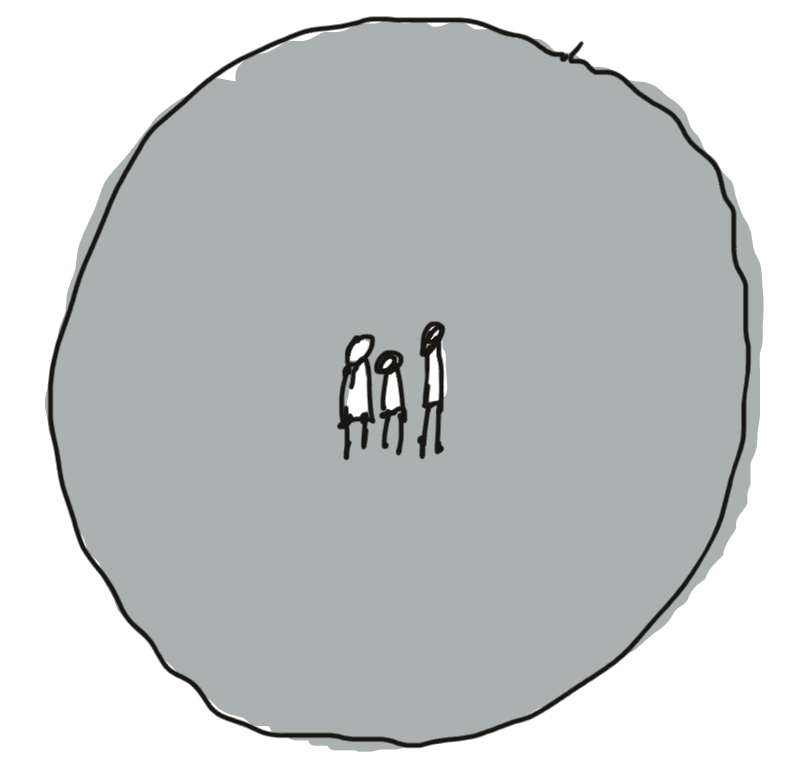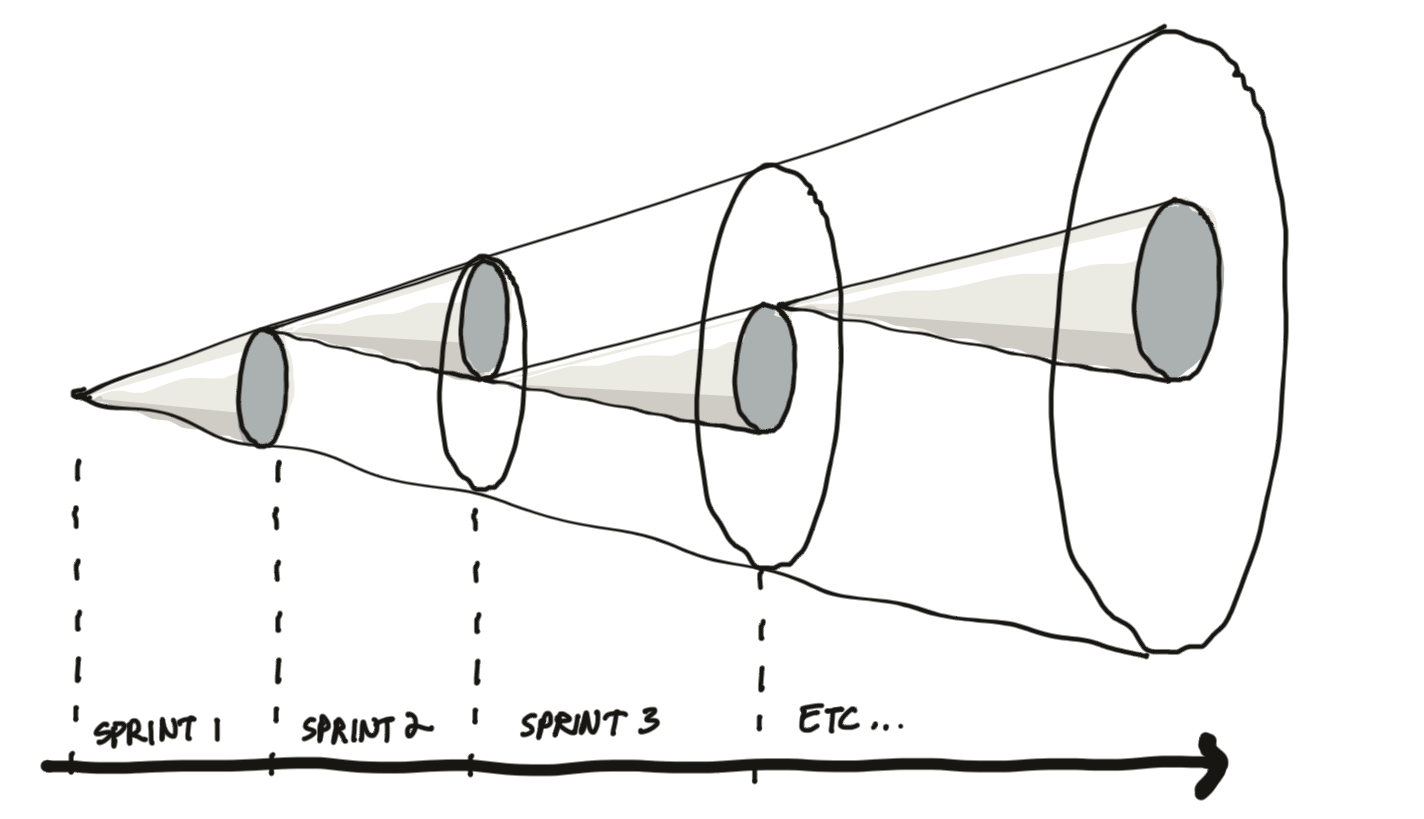Erratum: an earlier version of this post made it sound as though this concept was my idea. My friend Christina Wodtke rightly called me out on it; the cone of uncertainty is a concept with a long history in project planning. I must have read about it at some point and buried it in my subconscious. Apologies for any confusion this may have caused; I’ve edited the post to clear it up.
“The beginning is always today.” — Mary Wollstonecraft
Imagine you’re ramping up to work on a new project that will keep you and your team busy for many months. Before you start, you must define a plan for how you will tackle the work. For example, you must figure out what resources you will need and by when. This requires that you make predictions about the future state of the project: “By the fourth week, we should have already produced high-level design directions. At that point, we’ll be ready to engage a UI designer and a prototyper.”
The problem is that you can’t predict the future with certainty; the best you can do is make educated guesses based on previous experience and best-practices. And of course, reality has a way of messing with things: By week three, the team may uncover a vital requirement they initially missed that forces them to re-think their direction.
Because of this, the team’s confidence in their plans should drop the farther they cast into the future. They must be sure of the activities they need to undertake immediately, and doubtful of the things needed in the more distant future. I often visualize this as a circle of uncertainty around the team:

The smaller the circle, the more confident the team can be of what’s needed next. For example, they know they must start by understanding the context of the problem space they’re exploring, so they organize activities they know will get them what they need: contextual research sessions, workshops, analysis of existing materials, etc. There’s a small subset of project activities that fit this description, hence the small circle. You can describe what will happen next with precision, much as you would be able to draw with lots of detail using a fine-tipped marker.
When it comes to forecasting the stuff that will be needed six months into the project, there are many more possibilities. The team may guess at what will be required, but that makes assumptions that may not pan out. One missed assumption may call for shifting directions in ways that will impact other assumptions. These assumptions accrue the farther into the future you project, so the circle of uncertainty six months into the project is much broader:

So you can think of your plans as a cone that goes from the present to the future. Your scope for action in the near-term is relatively narrow, whereas you could end up going many different directions further down the line.

This is a concept known as the cone of uncertainty, and it’s used to discuss confidence in project plans. The cone is a useful image in that it conveys the higher precision we have when thinking about immediate next actions versus actions in the distant future.
The admission to decreased confidence in plans as you project further into the future can make people uncomfortable. This is understandable; people want to know what the team will be embarking on — especially if they’re paying for it. But the truth of the matter is that some projects are less certain than others. For example, a project to design a web page to describe a new product within a website that has a robust design system is going to have a more acute cone of uncertainty than a project to design an information environment for an early stage startup.
In projects with very broad cones of uncertainty, it helps to break things down into shorter stages and making ongoing planning an explicit part of the work. You can think of it as designing the project itself to include cybernetic feedback loops that keep proceedings on track towards the desired state, even as the team confronts a continuously evolving project context.

The key to making this work is continuous communication with stakeholders. While it’s understandable for month-five activities to be somewhat vague during the project’s first week, it’s not acceptable for stakeholders to be under the impression that week-one plans are still in sway during month five. As the project progresses, the cone of uncertainty gets narrower and narrower, until it (ideally) hits the mark the team was initially aiming towards.